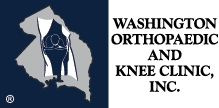

Osteoporosis means “porous bone”. This is a silent disease since there may be no symptoms until a fracture occurs. In this disease bones are weakened by the loss of minerals, especially calcium. This disease is usually is associated with aging and according to the National Osteoporosis Foundation (NOF) approximately half of all women in the USA and one in eight men will have an osteoporosis- related fracture at some point in their lives.
This is a crippling disease which is growing in numbers each year among older Americans, especially women and according to some estimates the cost for treating osteoporosis and osteoporosis related problems to be somewhere in the neighbourhood of 15-20 billion dollars per year.
With proper prevention there are hopes that significant number of osteoporosis related fractures and its complications can be avoided.
Treatment must begin before symptoms appear and is aimed at slowing down bone loss, starting at menopause.
Two important preventive measures are weight bearing exercises and adequate amount of calcium intake.
Risk Factors:
There are some risk factors that no one has control over and include:
- Female gender and age
- Low body weight
- Positive family history
- Fair skin (Caucasians and Asian)
- Early menopause
Factors that we can control:
- Smoking
- Excessive alcohol intake
- Low calcium intake
- Lack of weight bearing exercises such as running ,jogging ,walking
- Excessive use of some over the counter drugs such as laxatives and antacids
Diagnosis:
Diagnosis of osteoporosis is done by determining the Bone Mineral Density (BMD)
Utilizing DEXA tests which is a safe, painless and non-invasive test.
This test is used to diagnose and detect low bone density (mass), risk of a fracture and to monitor therapy.
The result is interpreted by your T-score:
- 0- to -1.0 Bone mass is normal
- -1.0 Bone mass is 10% below normal
- -1.5 Bone mass is 15% below normal
- -2.0 Bone mass is 20% below normal
You are considered osteoporotic if your bone mass is at least 20% below normal.
Recommended calcium intake (mg/day) varies in different age group, for example from 19-50 years of age 1000 mg and from 50 and above 1200 mg is necessary.


Commonly use drugs for treatment of osteoporosis:
- Actonel (Risedronate Sodium Tablets) taken daily/weekly or monthly
- Boniva (Ibandronate Sodium) Usually is taken once a month
- Evista Raloxifene Hydrochloride) Usually is taken daily
- Fosomax (Alendronate Sodium) Usually is taken daily or weekly
- Reclast (Intravenous Injection) Once a Year
